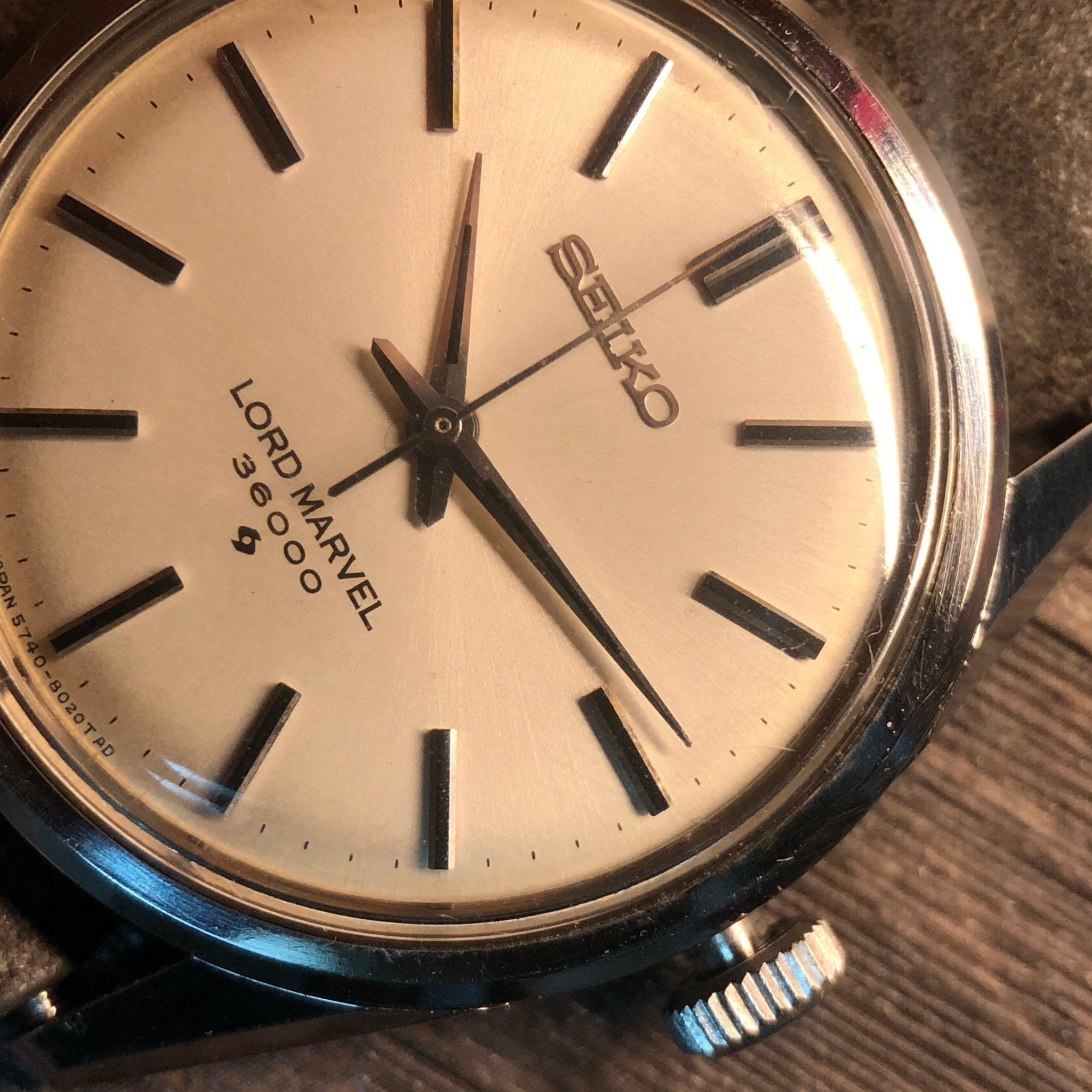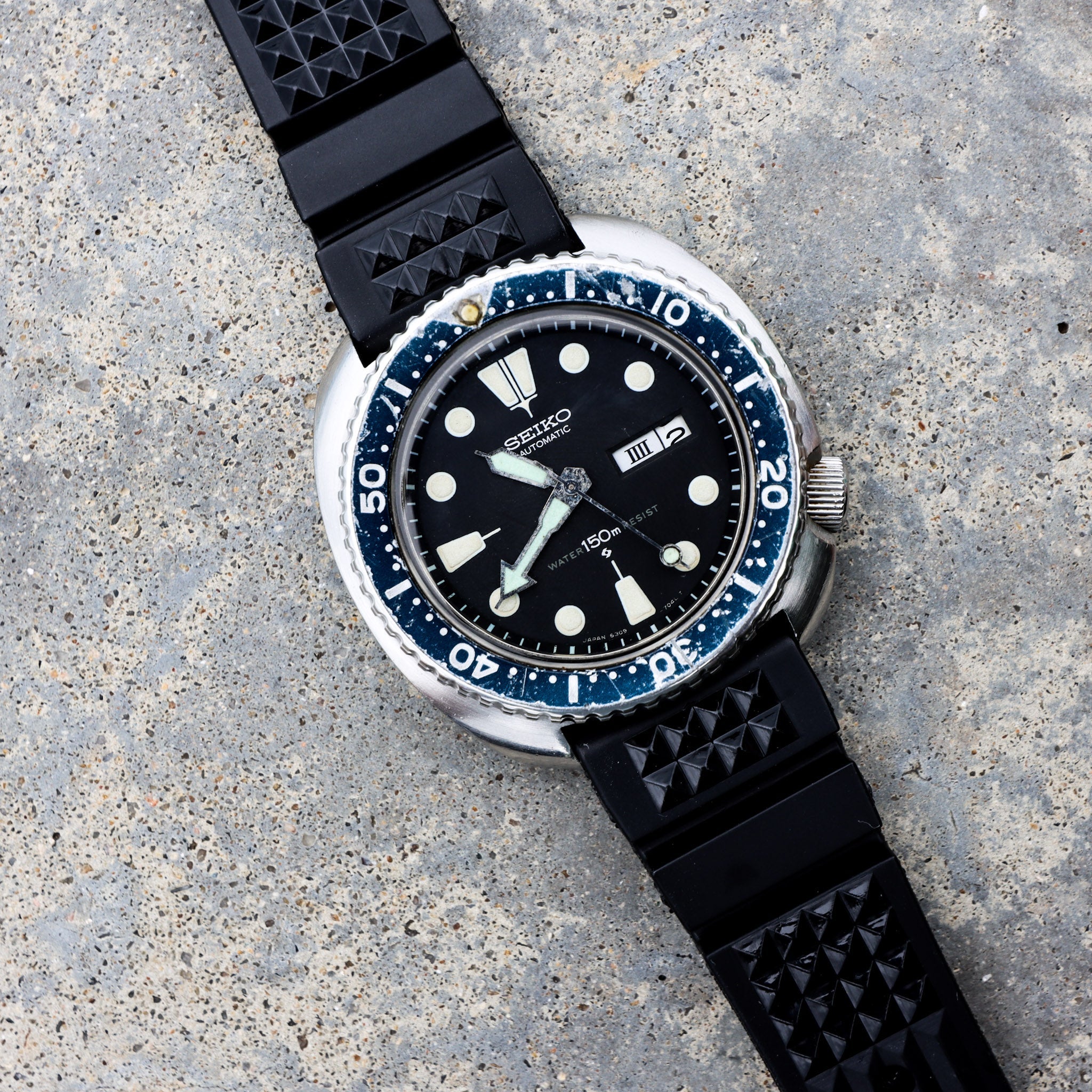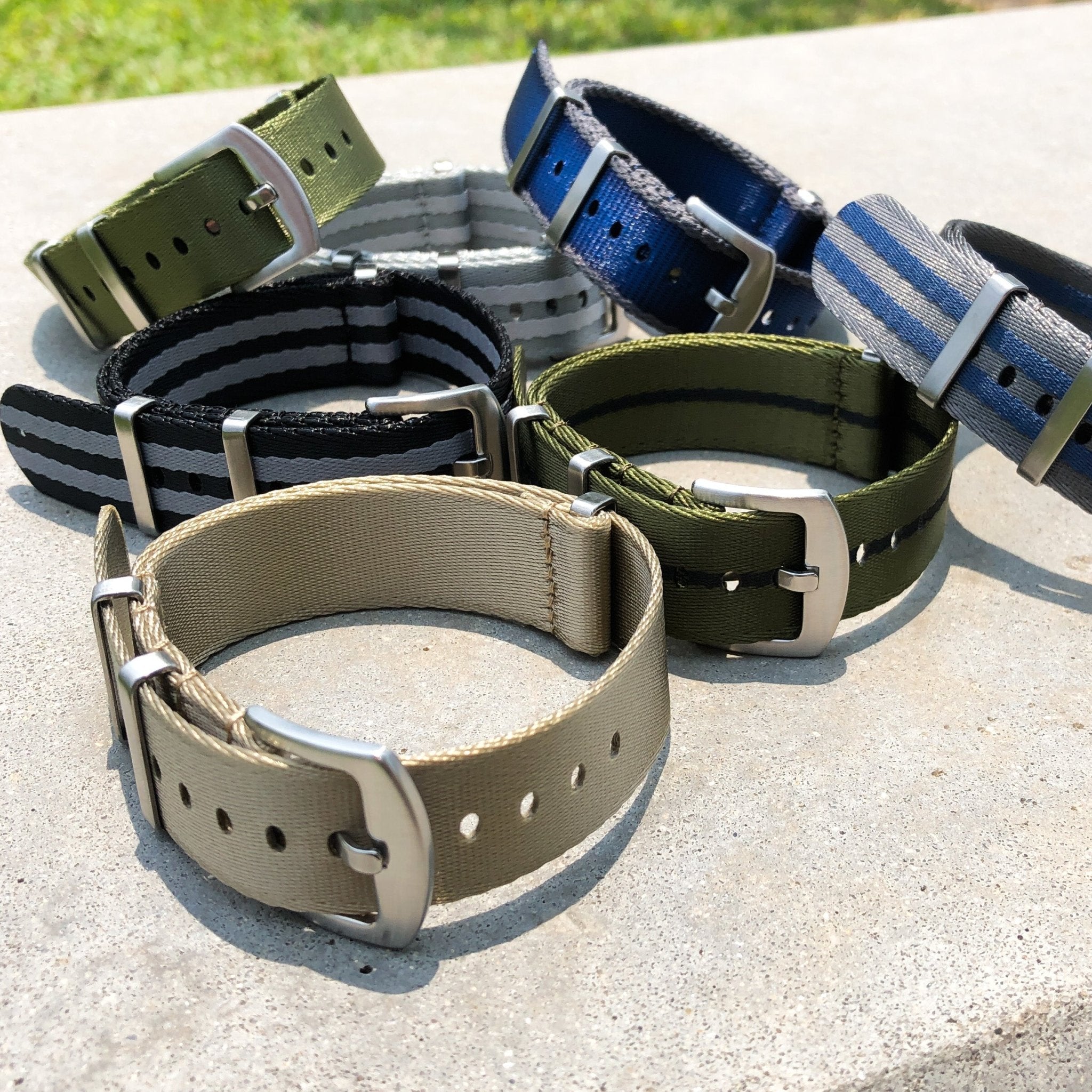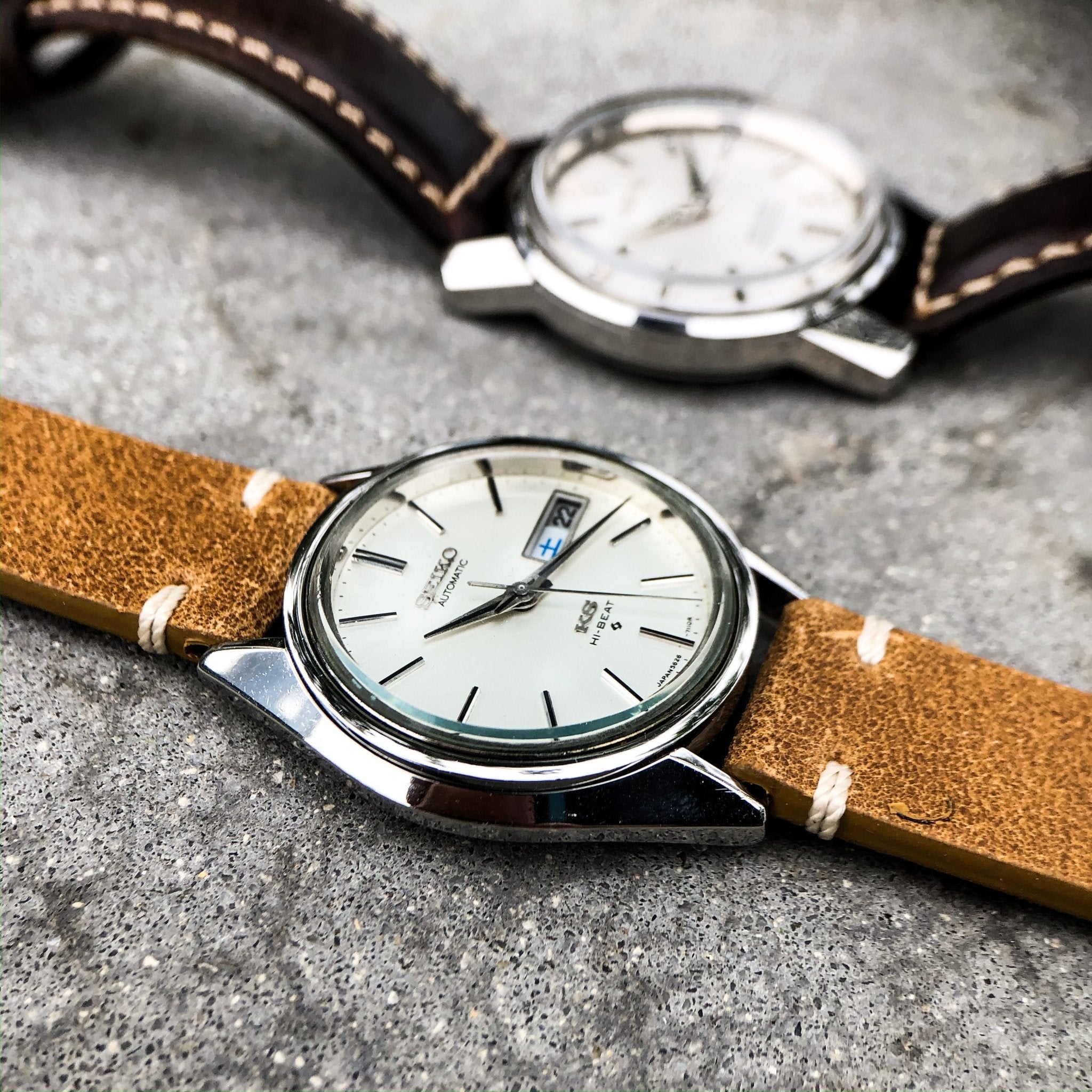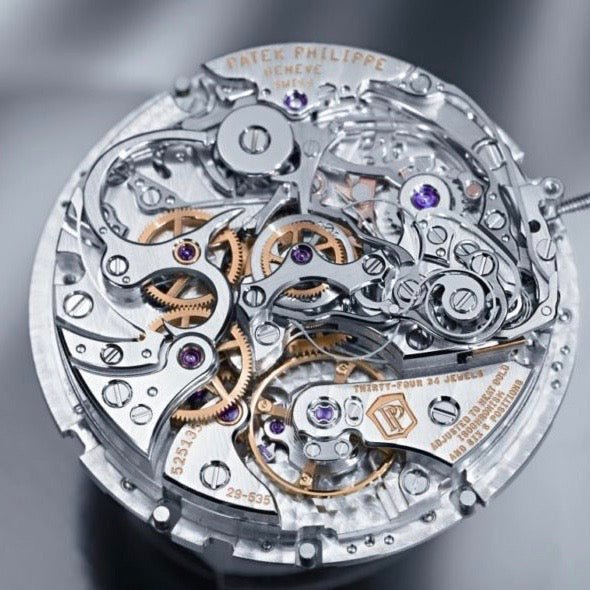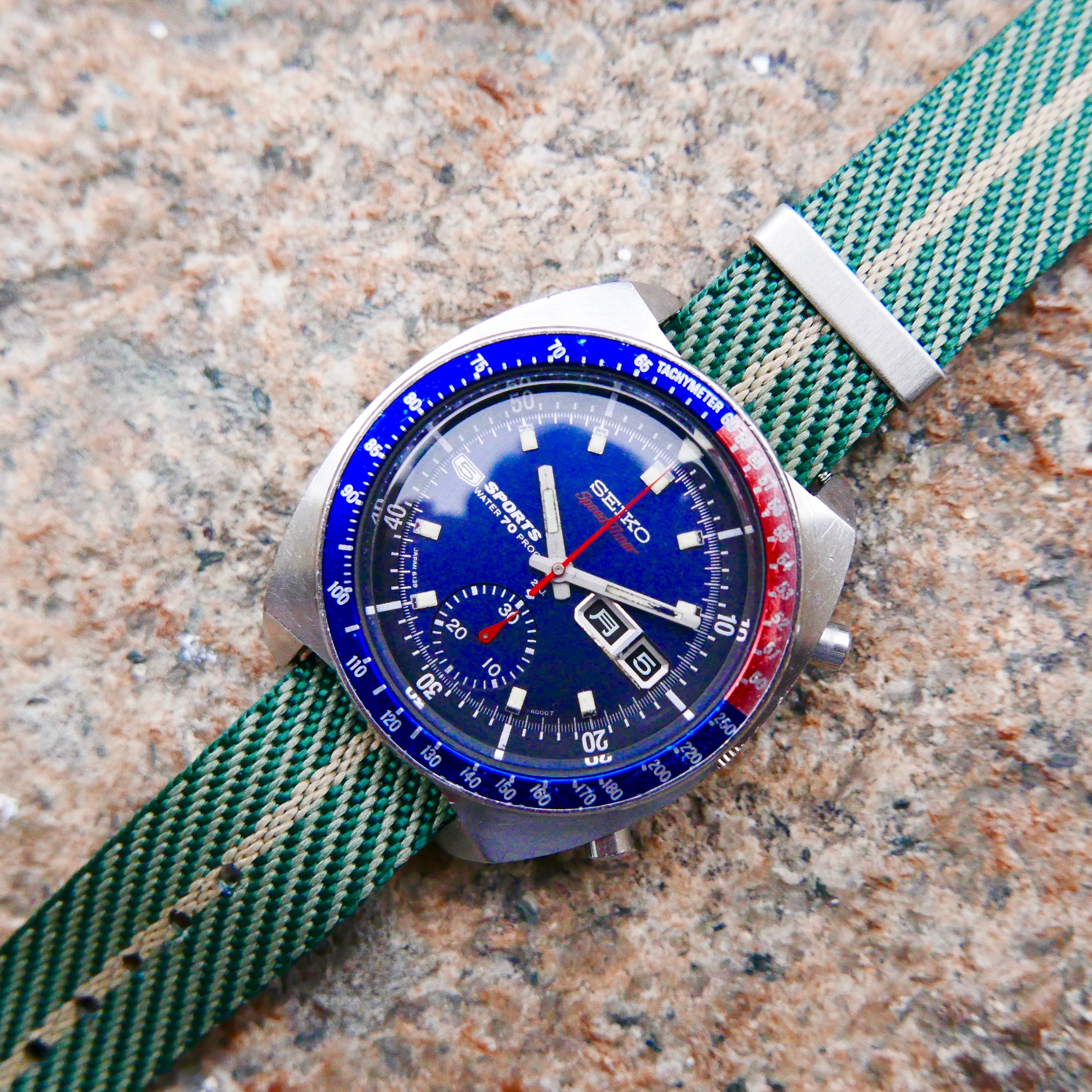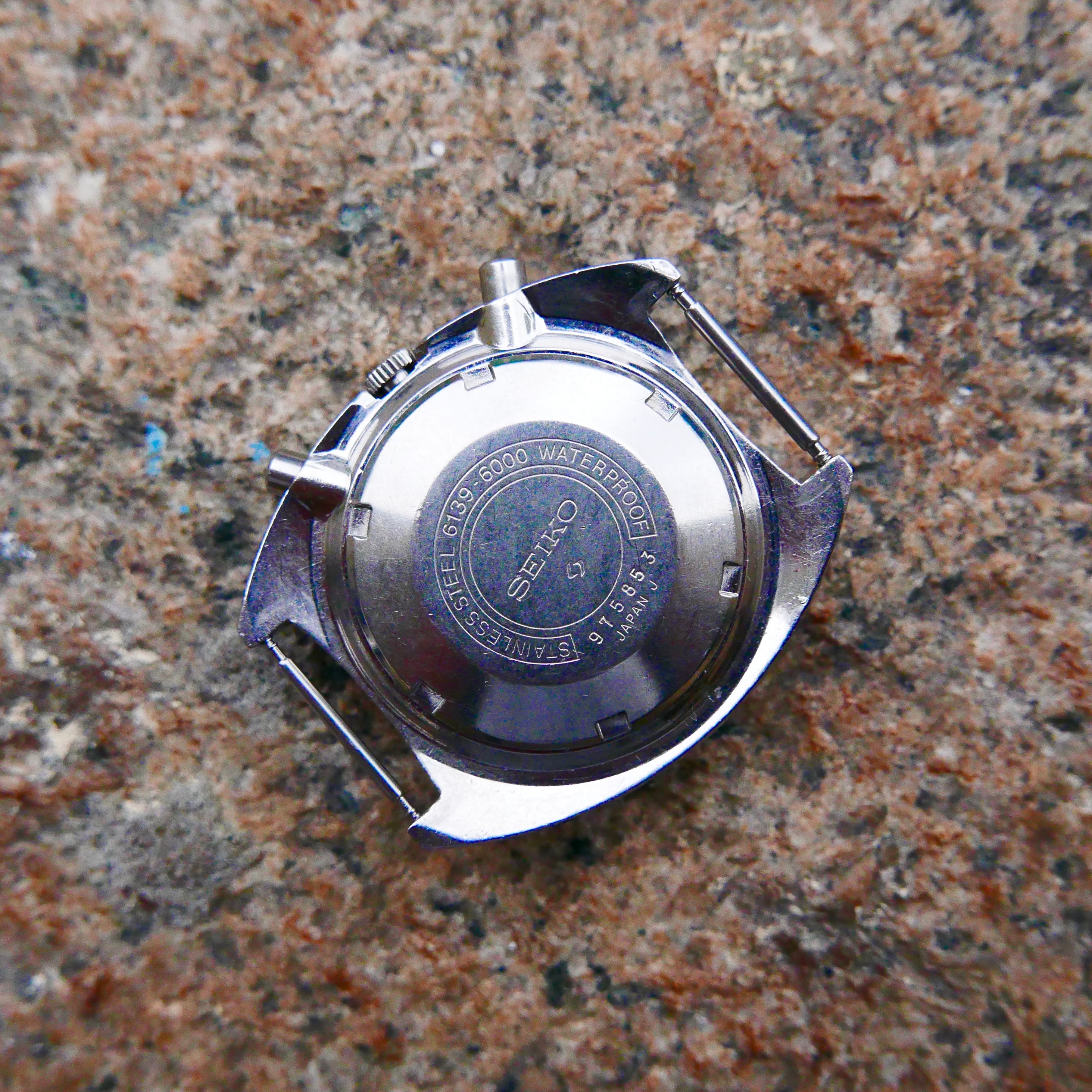Seiko 6139-6000 "Reverse Pogue": A Legend with a Twist
If you love watches with a story, this 1973 Seiko 6139-6009 "Reverse Pogue" is your ticket to horological nirvana. It’s not just a chronograph—it’s the underdog that beat the Swiss to the punch, earned NASA astronaut William Pogue’s trust in zero gravity, and now wears its 50 years of history with pride. With its rare dark blue dial, faded "Pepsi" bezel, and Kenji day wheel, this is the rebel cousin and a later generation of the classic gold-dialed Pogue.
Why the 6139 Changed the Game
In May 1969, Seiko quietly dropped a bombshell: the Caliber 6139, the world’s first automatic chronograph movement, beating Zenith’s El Primero and the Swiss Caliber 11 by months. Its secret weapon? A vertical clutch system (later adopted by high-end brands) for smoother chronograph starts and stops. No hand-winding needed—just pure engineering ingenuity.
But the real drama came in 1973, when Colonel Pogue, a NASA astronaut, snuck his personal Seiko 6139-6005 (the gold-dial "Pogue") aboard Skylab 4. Despite NASA issuing him an Omega Speedmaster, Pogue trusted his $71 Seiko to time critical engine burns. The watch performed flawlessly in space, making it the first automatic chronograph to leave Earth’s atmosphere (Beyond the Dial).
What Makes This "Reverse Pogue" Special?
This 6139-6009 flips the script with a dark blue dial (the watch is a truly Japanese Market JDM watch) and a rare Kenji day wheel—far harder to find than the standard version. Over decades, its features have aged into a time capsule of patina:
-
The "Pepsi" Bezel: Once vibrant red and blue, now faded to soft coral and powder blue—a vintage lover’s dream.
-
Dial & Lume: The black dial contrasts with a black chapter ring (functional and can rotate) and matching lume plots. No two age the same way.
-
Case & Wear: The 39mm stainless steel case (43mm lug-to-lug) shows honest wear, with minor polishing on the caseback. The dimpled crown (day and date quick change function works perfectly) and column-wheel pushers are hallmarks of early Seiko chronographs.
The Movement That Started It All
Inside ticks the legendary Caliber 6139, a 21-jewel automatic chronograph with:
-
Quick-set day/date (push the crown deeper for day, less for date).
-
45-hour power reserve—impressive for 1973.
-
Zero-G proven reliability (thanks, Colonel Pogue).
How to Wear It
We’ve paired it with a nato strap to fit in its sportiness. Pick one from our collection to make it your own—try olive green for a military vibe or navy for a pop of color.
Specs at a Glance
-
Model: Seiko 6139-6000 Seiko 5 Sports Speedtimer "Reverse Pogue"
-
Year: Jul 1979
-
Case: 39mm stainless steel (43mm lug-to-lug)
-
Dial: Black with Kenji day wheel, aged lume
-
Movement: Caliber 6139 automatic chronograph
-
Extras: Aftermarket bracelet + your choice of NATO strap
Final Thought
This isn’t just a watch—it’s a piece of underdog history. Whether you’re a Seiko collector, space nerd, or just love bold vintage design, the Reverse Pogue delivers. And hey, if it’s good enough for NASA’s rogue astronaut, it’s good enough for your wrist.
